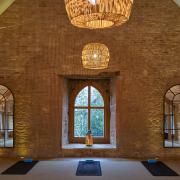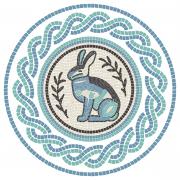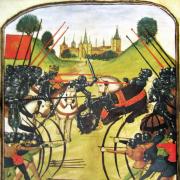From Glevum to Corinium, via Chedworth, Lydney Park, Great Witcombe and North Leigh, the Romans were rather fond of this area, says Stephen Roberts
To filch from The Life of Brian: ‘What did the Romans ever do for us?’ Indeed, apart from those roads, aqueducts, miscellaneous stone buildings held together with an early form of cement, villas, walls à la Hadrian and Antonine, baths, temples, towns, hypocausts (central heating), and not forgetting the ‘Pax Romana’ (Roman peace), well, what exactly did these Romans do for us? As someone who once scored 6% in a Latin exam, I can’t think of anyone better qualified to tell you.
The Romans had a gander under Julius Caesar, a couple of exploratory missions in 55 and 54 BC. They didn’t stay, though. ‘He came, He saw, He scarpered’, roughly translated as ‘Venit, vidit, reliquit’ (or something like that). If you remember I, Claudius (1976) you’ll recall the masterful portrayal of the stammering emperor under whose auspices the invasion proper of Britannia occurred in 43 AD. He was dead in 54 AD so wasn’t troubled by the revolt of the Iceni in East Anglia under their warrior queen, Boadicea, who appears to have been renamed Boudicca about the same time the planet Uranus found itself a more modern and less offensive pronunciation. I digress slightly.

It was another ancient British tribe holding sway in our part of the world, the Dobunni (or Dobuni). Cirencester is still the ‘Capital of the Cotswolds’ and this was also true for the Dobunni when, as Corinium Dobunorum, it became one of the chief Roman administrative areas for the south-west after the invasion of 43. Come the 4th century AD Corinium would be a Roman metropolis; its strategic position at the hub of a roads network elevating it to become Roman Britain’s second most important town. There was the Fosse Way, arrowing its way from north-east to south-west, from Lincoln to Exeter, straight across the Cotswolds and right through Cirencester, plus the lesser-known Akeman Street which wended its way across from St Albans (‘Verulamium’), and finally another long-distance route connecting Gloucester (‘Glevum’) with Silchester (Hampshire), a.k.a. ‘Calleva Atrebatum’. Yes, Cirencester was a major Roman road junction, replete no doubt with motorway services and a line-up of chariots – the SUVs of the Roman world.


Glevum was the beginnings of Gloucester, a Roman fort guarding the lowest crossing of the Severn and providing the legions with their route into Wales, although the first military site here could have been a ½ mile north at Kingsholm, and early in the occupation, before 50 AD. The Romans were always handy in a scrum. The city’s main thoroughfares still follow the Roman roads, meeting at the Cross, including Ermin Way which connected Gloucester with Cirencester (not to be confused with the more famous Ermine Street, the London-York road).
It would be one of four ‘coloniae’ (home for retired legionaries) in 97 AD, so one of Roman Britain’s more significant places with pottery workshops. Excavations have revealed the site of the Roman forum, occupying around two acres, and that of the basilica or admin building with colonnades on two sides, plus fragments of an emperor’s equestrian statue. The main finds can be viewed in the Museum of Gloucester (previously the City Museum). Cirencester meanwhile benefited from a splurge of public building, the Romans presaging the Victorians. During the Flavian era (69 to 96 AD) structures serving official function, such as basilica and forum, were thrown up. A stone circuit (walls) would follow later, in the mid-3rd century AD.

With southern Britain pacified, the Romans began erecting their walls, confirmation that even the mighty Roman Empire had its limits. There was Hadrian’s Wall (built 122-128) and then the lesser-known Antonine Wall (142-154) thrown up even further north as Rome resolved to hold on to what it had and try to keep the Picts (Scots) out. In the south, though, there were no such problems. A Roman road leads into Lydney where Lydney Park, a.k.a. ‘Camp Hill’, has the remains of a Roman temple; its dedication to a Celtic God, ‘Nodens’.

Other finds included a hoard of Roman coins. Dorchester (Oxfordshire) gets its name from a Roman town, ‘Dorocina’, founded between the current village and the Thames; this past confirmed by the discovery of an altar dedicated to the Roman god Jupiter and emperor Augustus, plus the more common tessellated pavements, coins et al. Dorocina was conveniently placed on a Roman road extending from another Dorchester (‘Durnovaria’) in Dorset, and heading north-east to Silchester/Calleva and then on to Dorchester (‘Dorocina’) and the Thames. That road was the Portway, which continued on its merry Roman way to Alchester, further up in Oxfordshire. At Dursley (Gloucestershire) is a huge Iron Age hill, later used by the Romans; they left their coins and pottery to be discovered.


The stone village of Chedworth lies west of the Fosse Way, and a little to the north is the Roman villa, near Yanworth, which must be one of the most comprehensive such complexes in England. Set in 6½ acres of National Trust woodland, here is the perfect place to find out what life in Roman Britain was like during that settled period between 180 and 350 before the decline set in. Discovered during the Victorian era (1864), the villa has quite remarkable mosaic pavements and bathhouse. A museum hosts smaller finds from digs that have continued almost continuously. It’s amazing what’s found where. Lower Swell (near the Slaughters) was having restoration work done on its church in the 19th century, and the locale decided it was high time it coughed up its hoard of Roman coins and jewels. In Eckington (Worcestershire) I came across an information board for ‘Roman Meadow’ which told me that: ‘This site marks where a Roman soldier lay hidden for nearly 2,000 years’ with archaeological investigation revealing: ‘A wide range of ancient artefacts’.


Another Roman villa, at Great Witcombe, near Gloucester, is thought to have been built even earlier, during the First Century AD, when the Roman occupation was still being resisted, and possibly remained occupied until the 5th century when the lights started going out on Roman Britain. These rough dates are derived from coin finds, the first excavations during the 19th century.


The village of North Leigh is another with villa remains which can be found via a short walk to the north-east where one’s intrepidness is rewarded with a hypocaust and tessellated pavement. My 50-year-old guide warns against driving to the door as it’s a steep descent down a narrow lane, oh, and there’s no turning space. Probably not one for the sat nav; did I mention there’s no turning space? At Woodchester, near Stroud, we have the foundations of one of the largest Roman villas ever excavated in this country, including a magnificent mosaic paving representing Orpheus, he of the Underworld.


Yet another Roman villa, or the remains thereof, are at Spoonley Wood, just to the south-east of Sudeley Castle. The Victorians were hard at it – discovering and excavating Roman remains, that is – and the villa at Spoonley Wood was duly excavated in 1882. Some remains of the courtyard-type villa can be seen, plus a mosaic, whilst remains of another, separate building, possibly a barn/granary were found within 20 metres. Remains of another villa had already been found around 20 years earlier at Wadfield Farm, just under 2 km west. This was clearly a settled and prosperous area under the Romans.
The Cotswold villas, the great Roman houses of our area, were still being extended after 300, the siege mentality yet to come. It wasn’t all about luxurious living, reclining with bunches of grapes, and writing the occasional ode. There was industry, too; the Romans were busily mining in the Forest of Dean. Evidence of their so-called ‘scowles’ are sometimes discovered under grassy mounds. At Littledean, on the Forest’s edge, are traces of Roman road paving, which once led to their mines, whilst at Bream those scowles can be seen, ‘huge caverns’ … ‘mysterious and masked in the depth of a wood’.

As Roman power in Britain began to wane from around 350 AD, Corinium was fated to decline off the back of that steady erosion. For Cirencester it was a diminution that was pretty much total, its recovery only coming later under the Anglo-Saxons when a ‘modern’ town emerged. It would slowly regain its former prosperity.
From around 367-368 Roman Britain was under attack from two quarters, a double whammy as the Picts chanced their arm in the north whilst the Anglo-Saxons began arriving from modern-day Denmark and Germany across the North Sea. There was a lot of water to flow under the Britannia Bridge, but those Anglo-Saxon invaders would eventually see an ‘England’ emerge. The usual date given for the ‘end’ is 410 when the emperor Honorius commanded that the legions return home. Britain then had to look to its own defence. As historian Michael Wood once said, the glory that was Roman Britain was to end ‘not with a bang, but a whimper’.
Cirencester held on to its former Roman greatness; the Corinium Museum in Park Street a veritable treasure-trove of Roman finds with excavations having confirmed the complete lay-out of the Roman town. Some of the well-preserved and vibrant mosaic pavements brighten up the museum, along with other artefacts. A Roman amphitheatre lies just outside the town at the Querns earthworks. If you fancy more ‘Roman Roaming’ try the museum in Gloucester and the villas at Chedworth, Lydney Park, Great Witcombe and North Leigh, to name but a few. What did the Romans ever do for us?

ROMAN ROAMING
Museum of Gloucester
Brunswick Rd, Gloucester, GL1 1HP.
Tel: 01452 396131.
Corinium Museum
Park St, Cirencester, GL7 2BX.
Tel: 01285 655611.
Web: coriniummuseum.org
Chedworth Roman Villa
Chedworth Roman Villa, Cheltenham, GL54 3LJ.
Tel: 01242 890256.
Web: nationaltrust.org.uk/chedworth-roman-villa
Lydney Park Estate
Lydney Park, Lydney, GL15 6BT.
Tel: 01594 842844.
Great Witcombe Roman Villa
Brockworth, Gloucester, GL3 4TW.
Tel: 0370 333 1181.
Web: english-heritage.org.uk/visit/places/great-witcombe-roman-villa
North Leigh Roman Villa
North Leigh, Witney, OX29 6PZ.
Web: english-heritage.org.uk/visit/places/north-leigh-roman-villa
References
- The Mammoth Book of King Arthur (M. Ashley, 2005)
- The Shell Guide to England (Ed. J. Hadfield, 1973)
- Roman Britain: 55 BC – AD 400 (M. Todd, 1981)
- In Search of the Dark Ages (M. Wood, 1981)
- Museum of Gloucester (museumofgloucester.co.uk)
- English Heritage (www.english-heritage.org.uk)
- National Trust (nationaltrust.org.uk)
- Corinium Museum (coriniummuseum.org)
- Lydney Park Estate (lydneyparkestate.co.uk)




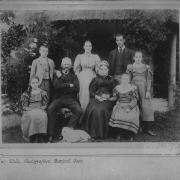





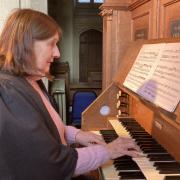

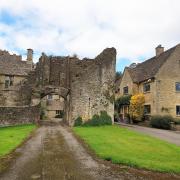

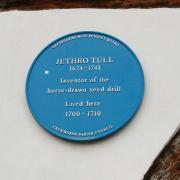

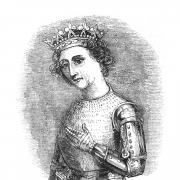

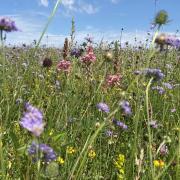
![Latenightpass with Gina Andrews [left] wins the Cross Country Chase at Cheltenham, December 15, 2023. Photo: Steve Davies/SDphotos.co.uk](/resources/images/128x89/1x/17621852.jpg)
![Latenightpass with Gina Andrews [left] wins the Cross Country Chase at Cheltenham, December 15, 2023. Photo: Steve Davies/SDphotos.co.uk](/resources/images/180x180/1x/17621852.jpg)

